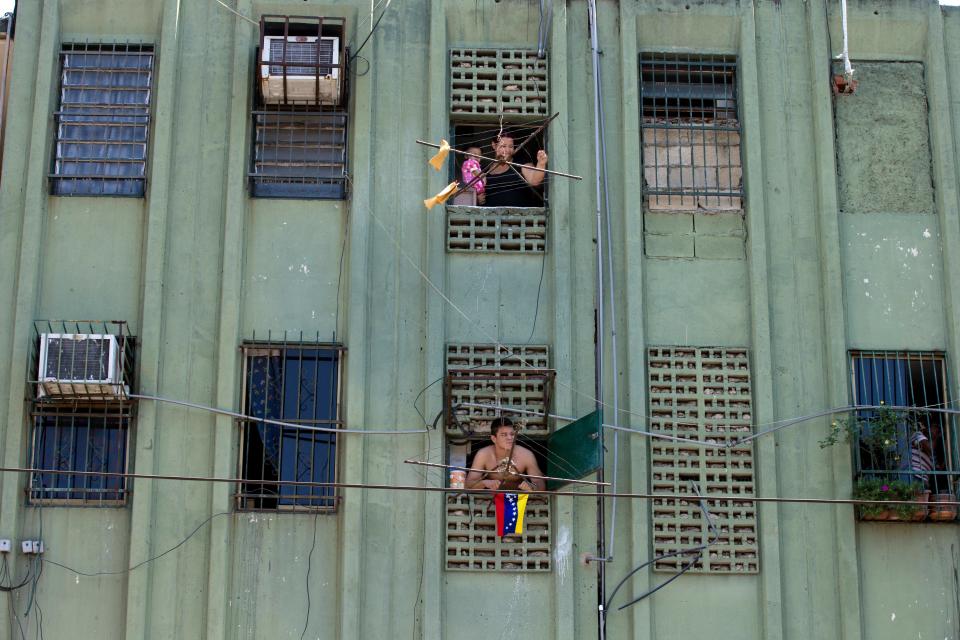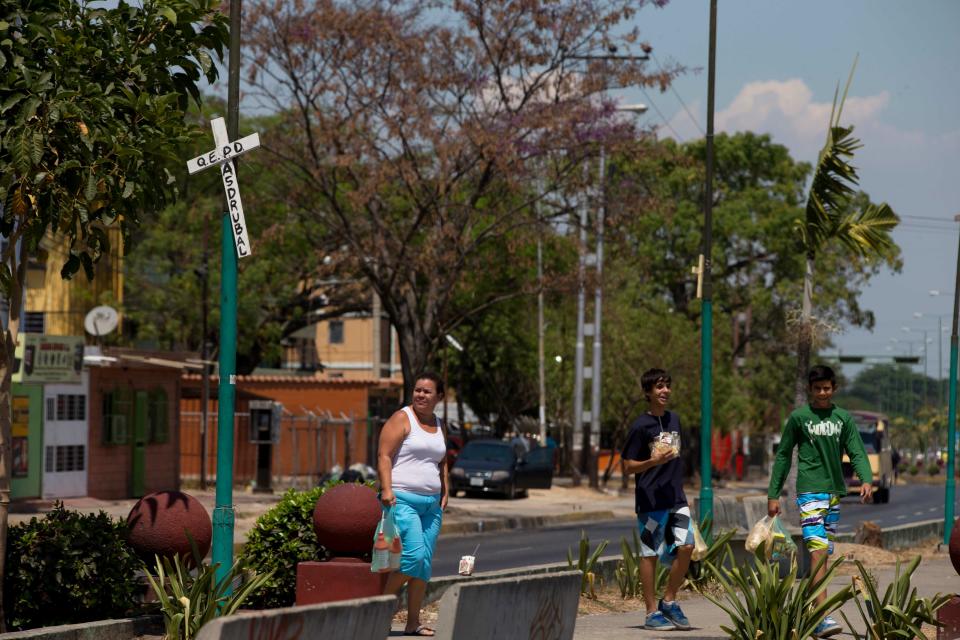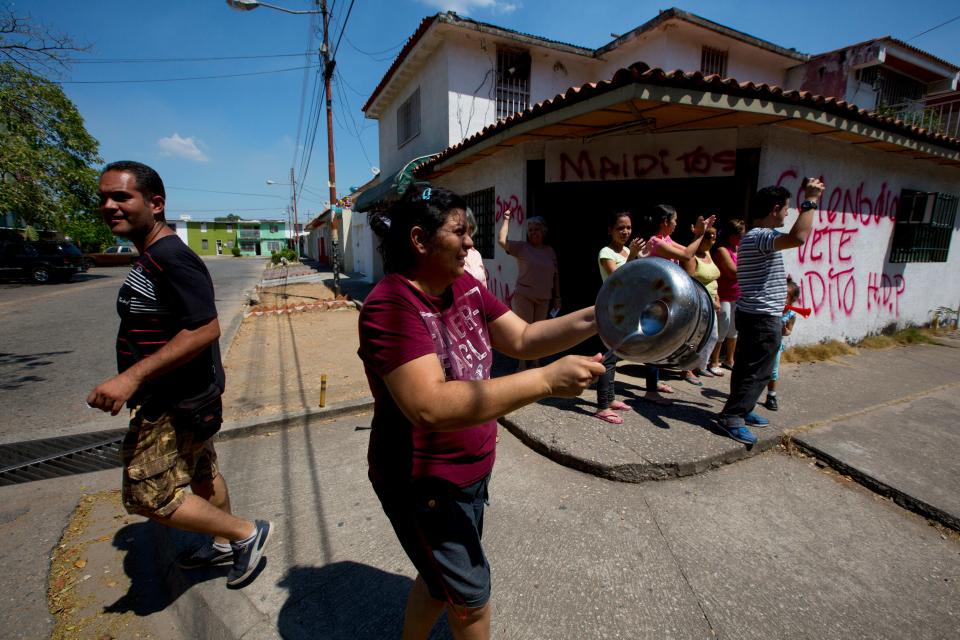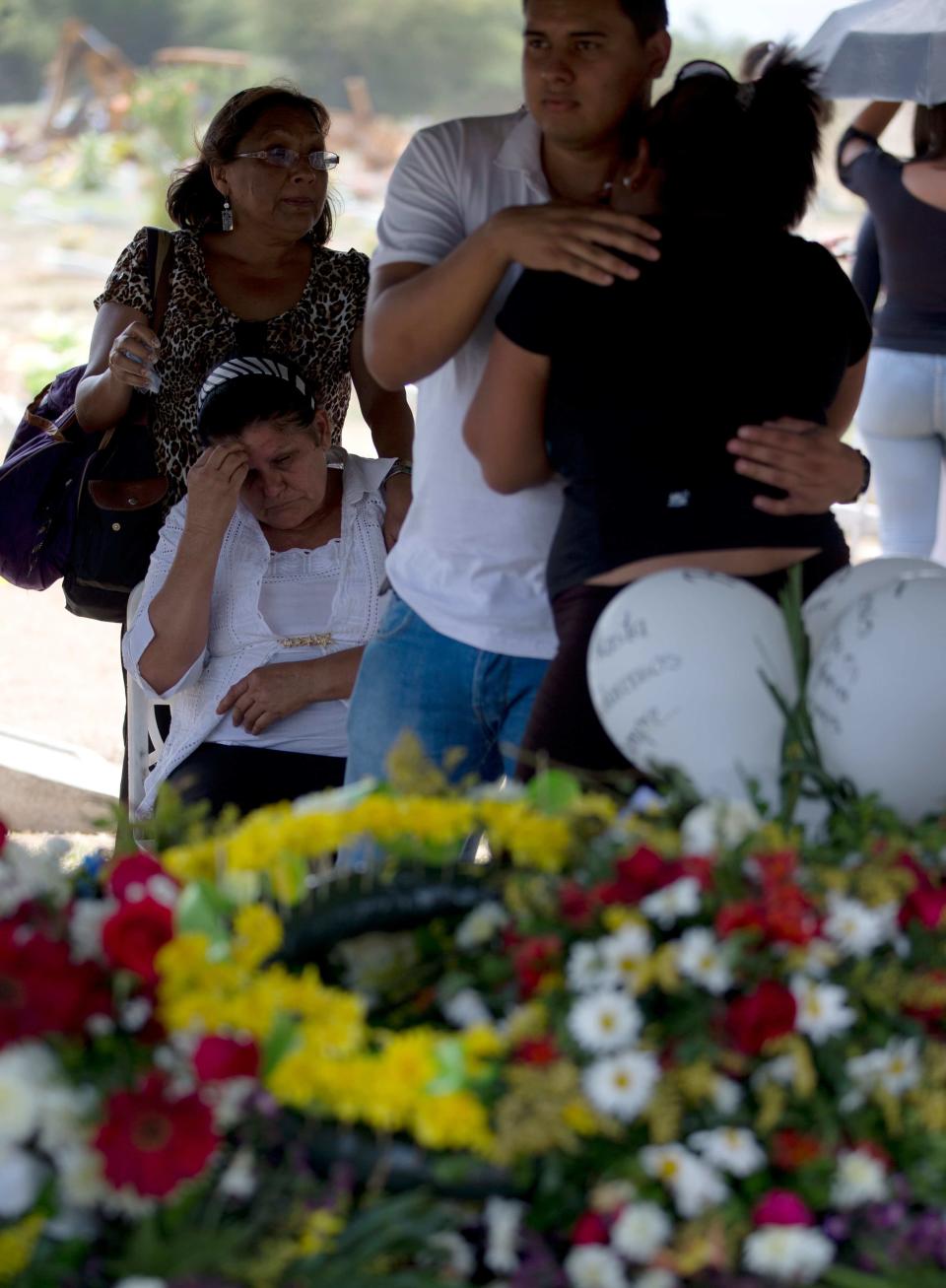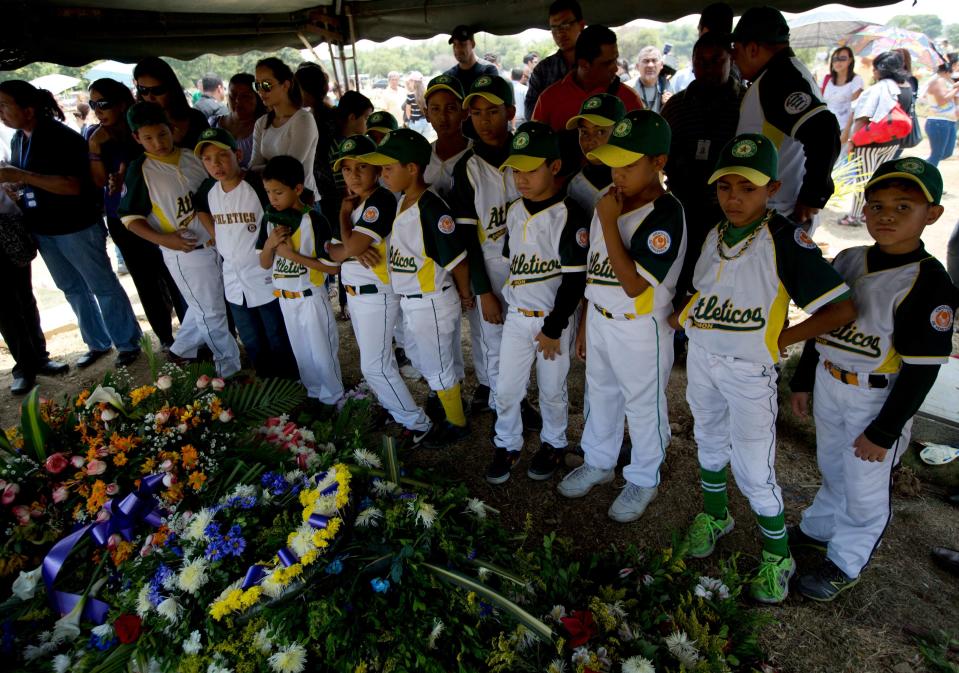Armed pro-govt militias roil Venezuela protests
VALENCIA, Venezuela (AP) — The masked gunmen emerged from a group of several dozen motorcycle-mounted government loyalists who were attempting to dismantle a barricade in La Isabelica, a working-class district of Valencia that has been a center of unrest since nationwide protests broke out last month.
The barricades' defenders had been hurling rocks, sticks and other objects at the attackers, who included perhaps a dozen armed men, witnesses told The Associated Press.
Lisandro Barazarte, a photographer with the local newspaper, Notitarde, caught images of several of the men shooting into the crowd while steadying their firearms on their palms.
"They were practiced shooters," Barazarte said. "More were armed, but didn't fire."
When it was over, two La Isabelica men were dead: a 22-year-old student, Jesus Enrique Acosta, and a little league baseball coach, Guillermo Sanchez. Witnesses told the AP the first was shot in the head, the second in the back. They said neither was at the barricades when he was killed.
Similar shootings across Venezuela by gunmen allied with the socialist-led government have claimed at least seven lives and left more than 30 people wounded since the anti-government protests began in mid-February.
President Nicolas Maduro has done nothing to publicly discourage the violence by armed pro-government militants, loosely known as "colectivos," which are also blamed for scores more cases of beatings and intimidation in multiple cities. That includes a March 19 incursion into the architecture academy at the Central University of Venezuela in the capital in which some 40 masked men and women identifying themselves as government defenders bloodied at least a dozen students.
In fact, since the protests began, Maduro and his vice president have each welcomed pro-government "motorizados," or motorcyclists, to separate events at the presidential palace — a Feb. 24 rally and a "peace conference" on March 13.
At the latter gathering, Vice President Jorge Arreaza told his guests, "If there has been exemplary behavior it has been the behavior of the motorcycle colectivos that are with the Bolivarian revolution." He claimed the CIA was behind a propaganda campaign to discredit the colectivos.
Maduro has blamed the violence on the other side, telling supporters on March 9, "There are violent armed groups in the streets, and they are all from the right."
Colectivos have long been a fixture in poorer neighborhoods that became strongholds of the late President Hugo Chavez during his 14-year reign. They organize cultural events and community services such as youth summer camps but have also included armed motorcycle-riding militants who have long menaced opposition activists, blocking their marches and roughing up peaceful protesters.
Those violent tactics escalated when anti-government protests surged in mid-February. Fatalities since blamed on colectivo aggression have mostly involved university students, including a prominent student leader, Daniel Tinoco, shot in the chest March 10 in the western city of San Cristobal, where the unrest began amid student outrage at alleged police indifference to an attempted sexual assault.
Most were manning barricades, as were the two students in the western city of Barquisimeto wounded the following day by gunmen who pierced their university's perimeter and set fire to several cars inside.
During the attack in La Isabelica in Valencia, Acosta was hit by a bullet while he was inside an apartment with a friend near the barricades. Sanchez, 42, was out walking to buy a paint brush when the bullet that claimed his life tore into his lower torso.
One of Sanchez's neighbors, who spoke on condition he not be identified for fear of retribution, said the pro-government gang grabbed the wounded Sanchez and dragged him down the street, beating him.
"The police never came. There was no (National) Guard," the neighbor said. "It was the Wild West."
Daniel Wilkinson, managing director for the Americas for the U.S.-based group Human Rights Watch, said such colectivo violence is nationwide.
"This is just one example of a practice we've seen across several states, of security forces not only tolerating armed groups of civilians who attack peaceful protesters, but even collaborating with these gangs when they commit beatings, arbitrary arrests and other abuses," Wilkinson said.
Video and still images chronicling apparent colectivo abuse, mostly shot by private citizens, have been widely posted on social networks in a country where, according to international press freedom groups, independent journalism has been under steady government assault for years.
In many images, the gunmen are seen menacing people and removing barricades set up by protesters as police and National Guardsmen stand idly by.
U.S. Secretary of State John Kerry last month accused the Maduro government of wielding "armed vigilantes" against peaceful protesters, and the European Parliament passed a resolution on Feb. 27 calling on the government to "immediately disarm and dissolve the uncontrolled armed pro-government groups and end their impunity."
Spokesmen for Venezuela's colectivos deny perpetrating anti-opposition violence.
"No one has been able to offer proof (of abuses) because they don't have them," said Jose Pinto, secretary general of one of the biggest colectivos, the Tupamaros, which has been around since the 1970s. "Our only weapon is our conscience."
Such groups gained strength and multiplied under Chavez, with the Tupamaros becoming a political party after a failed 2002 coup attempt against the government.
Pinto denied that members of his group are armed and said the opposition simply fears the Tupamaros because the organization is growing stronger politically, winning two mayors' offices and 63 city council seats in December municipal elections.
Antonio Gonzalez, a sociologist and former university vice rector who advised a government committee that studied disarming loyalist vigilantes, said armed leftist militant groups have existed for some four decades but are marginal in influence and are being used by the opposition as a scapegoat.
"It's the perfect excuse to discredit the masses and Chavista organizations as violent," he said.
An attorney who has studied the groups as part of a commission formed by the MUD opposition alliance disputed that characterization.
Armed colectivos exist in at least 110 of the country's 1,136 communities, according to the attorney, Fermin Marmol Garcia. Their members were "at one point municipal or national police officers and who also may have at one point served in the military."
Some have day jobs in the government, working as bodyguards for top officials, said Alejandro Velasco, a New York University assistant professor who spent a year and a half from 2004-2005 living in the Caracas colectivo stronghold of 23 de Enero. He estimated that in the entire district of 150,000 residents about 500 people were involved with colectivos.
They identify themselves, said Marmol Garcia, as "guardians of the revolution" and are sometimes involved in resolving disputes in their barrios or in protecting small businesses.
Opposition leaders have been complaining about them for years and Maduro himself presided over a ceremony last August in the 23 de Enero district in which 100 firearms were destroyed, according to the official newspaper Correo del Orinoco.
Yet a week into the protest wave, Maduro said his government would not accept "the campaign to demonize Venezuelan colectivos," which he said "have organized to protect their communities."
That's certainly not what the masked attackers who identified themselves as colectivos were doing when they corralled about 40 male and female architecture students in a first-floor hall at the Central University of Venezuela for nearly an hour on March 19, ordering them at gunpoint to disrobe and robbing them of their belongings.
"They put a pistol in my face and said they were going to kill me," said Jhonny Medrano, a 21-year-old student, describing how he and several classmates were beaten with sticks, pipes and pistols by the attackers, whom he quoted as saying, "We are the ones who are defending the government. We are Chavez. We are Maduro."
The students said they were made to walk through a line of attackers, some of whom wore university firefighters uniforms, while they were beaten. As they left, the attackers filled the building with tear gas.
"This can't keep happening," architecture professor Hernan Zamora told the AP, crying inconsolably as he recalled the terror he felt. "This can't keep happening."
___
Associated Press writers Fabiola Sanchez reported from Valencia, and Frank Bajak from Caracas. Christopher Sherman contributed from Caracas.

